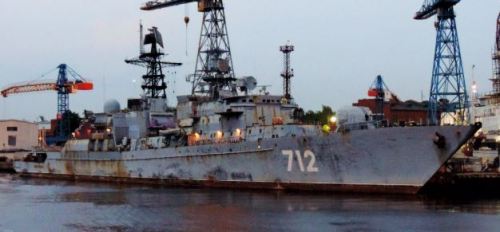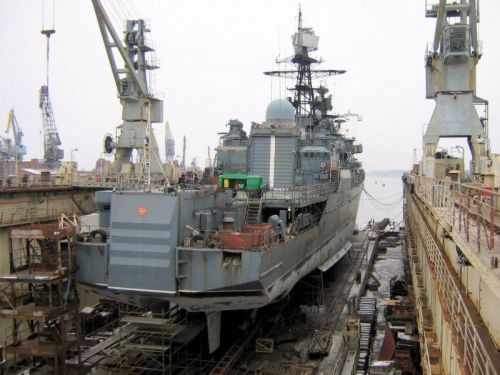The Russian press has noted the 6 March article in leading Finnish daily Helsingin Sanomat describing how a Russo-Finnish war might play out in 2010. With the conveniently provided English, one can read for oneself. But here’s a capsule version.
The imaginary war scenario begins with a Russian cruise missile strike on the Finnish Broadcasting Company compound. Under the State of Defense Law, mobilization begins and the Chief of Defense becomes Commander-in-Chief of the Finnish Defense Forces. Russian fighter aircraft engage Finnish F/A-18 Hornets around Helsinki. Finnish government entities evacuate to safer locations. Russia’s motorized offensive presses across the Karelian isthmus, trying to reach the Finnish capital in two days. The Finns respond with antitank weapons and German-made Leopard tanks. Russian airborne are dropped in Helsinki to disrupt rear areas; fierce urban warfare ensues. Civilian casualties mount and noncombatants flee for Sweden. The Russians and Finns are engage each other on the electronic front [but few details are fleshed out].
The war is decided in the air. Russian air power overwhelms Finland’s 100 combat-capable aircraft. But it’s no quick victory for Moscow, and the Finns receive lots of international support [it makes them feel much better to be sure].
There’s obviously a lot to question in the conjecture above.
Rossiyskaya gazeta from 19 March indicated that there’s buzz about the article in Russia and Finland, and people mostly want to know why such a ‘provocation’ has been published. So RG asked the Finnish paper’s editor to comment, and he replied:
“In the last two months we’ve written a lot about the Winter War and its results. And this article was part of that series of publications. I want to note that in this material a fictional war scenario is presented. Its purpose was to show how such a situation would develop if such a conflict broke out like at the start of the Winter War.”
“I’m not prepared to talk about what kind of war scenarios exist in the Finnish military. This is exclusively their business. We just published our view of an imaginary war.”
“It’s not possible here to say that we, in any case, wanted somehow to harm the relations of Finns toward Russia with our publication. I don’t think it’s possible to do this with one article. Or just the same draw Finland closer to NATO membership. Therefore I ask you not to find any kind of secret designs in our publication.”
“I want to note that our material cannot be put in the same row with reporting on a Russian attack on Georgia from Georgian television station ‘Imedi.’ The aim of the story of our Caucasian colleagues was to shake up the country’s population. In our material, we immediately indicated that the published war scenario was completely fictional.”
On 17 March, Argumenty nedeli criticized the author of the war scenario for not explaining why Russia and Finland would end up in a war. Even in the Cold War, Finland was a better friend to Moscow than some of its socialist allies.
According to Argumenty nedeli’s defense correspondent Yaroslav Vyatkin, Helsinki lived pretty well off trade with the USSR from the 1950s to the 1980s. But in the 1990s, an anti-Russian mood came over Finnish society. Finland forgot about its role as bridge between East and West, and reoriented its economy toward the EU. Some social movements actively agitated for Finland to join NATO. Vyatkin believes the U.S. has stoked these sentiments in hopes of broadening NATO’s northern flank.
But, according to Vyatkin, Finns who want NATO membership don’t understand that the alliance can’t defend them, whatever it promises. But he has confidence in the rational and calm Finns to make the right choice when it comes to Russia and NATO.
Then Vyatkin takes a closer look at the article’s military propositions and Finnish forces–about 90 Leopard and 65 T-72 tanks, about 200 BMPs and 800 BTRs. BUK-M1 air defense systems around Helsinki (which it stopped procuring due to reported unhappiness with their poor resistance to jamming). Vyatkin says the Finns’ F/A-18s and Hawk trainers would just meet a glorious death in close combat with A-50 controlled Su-27, MiG-29, and MiG-31B fighters. He thinks, though not strong, the Baltic Fleet is more than a match for the Finnish Navy. However, he acknowledges that only the 138th Independent Motorized Rifle Brigade and 76th Airborne-Assault Division are adjacent and immediately available for action against Finland.
Vyatkin tails off by noting that, although brave, and not badly trained and equipped, the Finns lose, but Russians and Finns won’t be fighting anyway.
Vyatkin’s assessment seems a bit overconfident. Russia’s Genshtab surely wouldn’t be this sure of easily subduing the Finns, especially or hopefully not after what was nearly, in many ways, a debacle against the Georgians in South Ossetia two years ago.
Svobodnaya pressa talked to Leonid Ivashov’s assistant at the ‘Academy of Geopolitical Problems,’ Konstantin Sivkov, about the new Winter War scenario. Sivkov calls it nonsense, saying it sounds like someone confused Russia with the U.S., since backward Russia’s not capable of such operations. He adds that he really doesn’t want to comment on such stupidity. Sivkov’s hard-pressed to come up with any conceivable reason why Moscow would want to go to war with Helsinki. So, he chalks this all, like the ‘Imedi’ incident, up to an effort to cast Russia in the role of an enemy, and to prepare for Western aggression against Moscow.
In early March, Voyenno-promyshlennyy kuryer published an article on northern Europe and NATO written by a candidate of military sciences, corresponding member of the Russian Academy of Rocket and Artillery Sciences and the chief of the scientific-research department of the Defense Ministry’s Military History Institute. The authors examined the possible negative consequences of Sweden and Finland joining NATO. They concluded that Finland has been a true military neutral, but domestic political debate and swings in public opinion on joining NATO have become more pronounced since the late 1990s. Some Finnish leaders have favored NATO, while others have argued for orienting more toward the U.N. or EU instead of joining NATO, which would, in their view, only add to international tension. The authors note that, despite its formal military neutrality, Helsinki has taken practical steps toward more integration with NATO, including going over to NATO arms standards, conducting joint maneuvers with NATO, and using Partnership for Peace to promote military compatibility.
Regarding the ‘Atlanticization’ of northern Europe, they conclude that the region’s military-political configuration and balance of forces would change radically if Sweden and Finland joined NATO. For Moscow, they recommend not only following the situation closely, but adopting a more clearly ‘multivariate and weighted’ line in relation to these countries. It is noted that, even if they joined NATO, they might not agree to host foreign troops.
Finally, the authors say that Finnish military policy could have particular significance for northern European security in coming years.





